Main Menu

M.1910 Feldmütze u. M.1917 Einheitsfeldmütze
M.1910 Feldmütze
The Feldmütze (sometimes also referred to as the Krätzchen) is a pillbox shaped cap of Feldgrau wool. The M.1910 Infanterie style Feldmütze has red piping around the crown and a red band around the base.
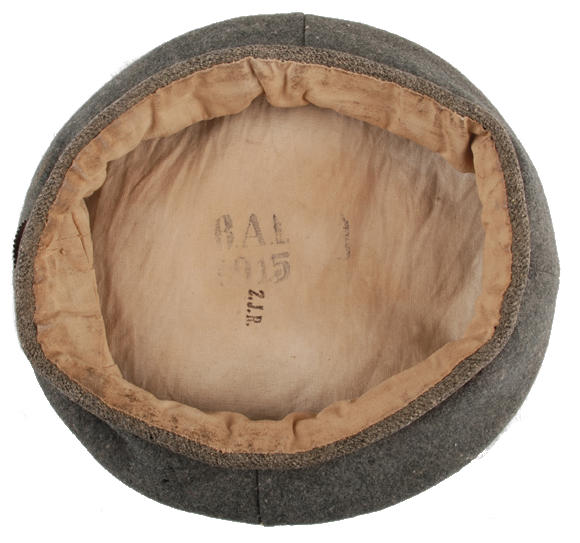
Original M.1910 Feldmütze.
This cap
has both the Reichs Kokarde and a Prussian Landeskokarde.
The infantry Mütze was adorned with two roundels (Kokarden) sewn one over the other. The upper Kokarde was known as the Deutsche or Reichs Kokarde, and it was painted in the national colors of red-white-black. The lower Kokarde was painted in the State colors and was known as the Landeskokarde. JR63 is based in Schlesien - a Prussian State, and the badge was painted in the Prussian colors of black-white-black.
M.1917 Einheitsfeldmütze
The 1917 Einheitfeldmütze has Resedagrün (reseda or pea green) piping around the crown and a Resedagrün band around the base. This cap was intended for use by all branches of service.
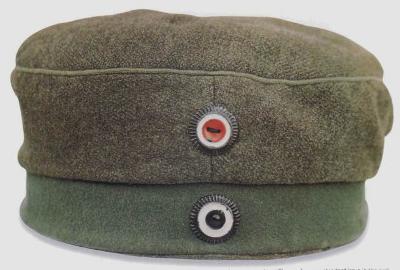
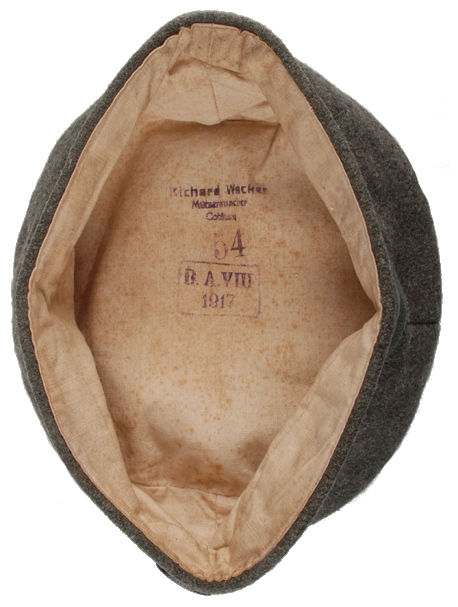
Original M.1917 Einheitfeldmütze.
This cap has both the Reich's Kokarde and Prussian Landeskokarde
Both the M.1910 and M.1917 are authorized for use in JR63, although the preferred cap is the Einheitfeldmütze. Both types of Feldmütze must be complete with both National and Prussian Kokarden (cockades) on the front. The Kokarden must be the type for enlisted use and they must be the sewn on Mannschaften (non-NCO enlisted) version, not the prong-back type which is the pattern for NCOs. If you chose to purchase the M.1910 model, you must also purchase the Besatzstreifen (see below).
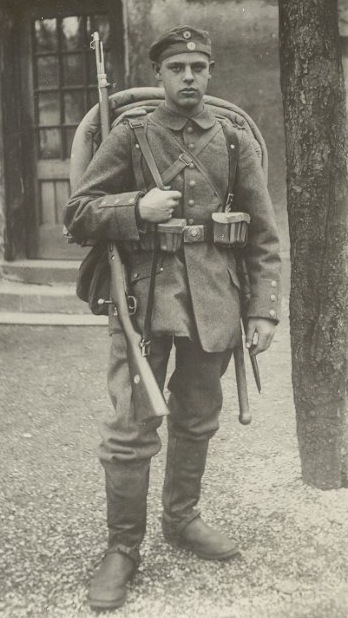
Original photo of a young Soldaten wearing the Feldmütze
Ideally, your Feldmütze should match your tunic type (i.e. a 1910 tunic with a 1910 grey Mütze with a red band or a Bluse with an Einheitfeldmütze), but in the real world - especially during WWI - this kind of thing was ignored. Soldiers were issued what was available and unless you are doing an early-war impression, it is not really important to match your tunic and Feldmütze.
Kokarden
1842 Reich's Kokarde
An Allerhöchste-Kabinetts-Ordre (AKO) - All Highest Cabinet Order - a directive issued by the King of Preußen (Prussia) to proclaim an approved article of clothing or equipment for general issue) of 4 November 1842 introduced a Preußen Kokarde in the national colors of black/white/black which was worn on the center of the Feldmütze band.
The Mannschaften (Other Ranks) Kokarde was stamped, one-piece metal, painted in the national colors with two holes on the front to allow it to be sewn to the Feldmütze.
1897 Reich's Kokarde
In 1897 a new Reich's Kokarde in Red/White/Black was introduced for all ranks to commemorate the 100th anniversary of the birth of Kaiser Wilhelm 1st. The Reich's Kokarde was to be worn on the right side of the Pickelhaube, and worn centered between the band and the top row of piping on Krätzchen (Feldmütze).
The Prussian black-white-black Landeskokarde continued to be worn on the center of the Feldmütze band, and by this time, other German states followed Prussia's example and were using Kokarden painted to their own individual State colors.
Besatzstreifen (Camoflage Band)
As soon as the armies settled into trench warfare, it was quickly apparent that the Pickelhaub was unsuitable for trenches and soldiers often wore just their Feldmütze - and they just as quickly discovered the bright red was very conspicuous. Therefore, to help conceal the red band of the Feldmütze, covers were made of a strip of Feldgrau or light grey cloth tacked (loosely sewn so it could be easily removed) directly to the cap. These covers were also made of a light webbing with an adjusting buckle in the back (this style was also lightly tacked to the Mütze as well).
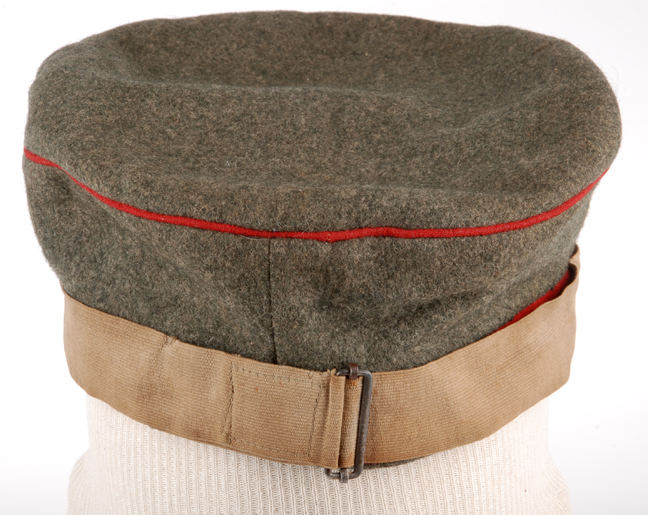
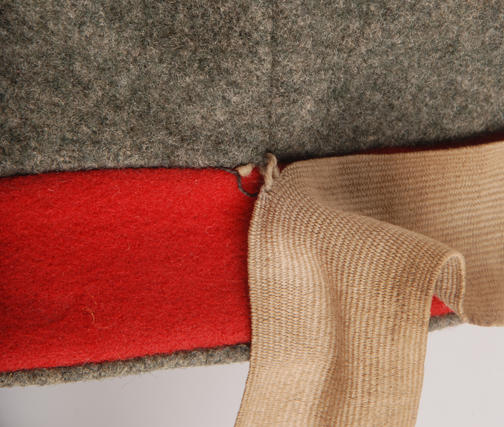
Original M.1910 Feldmütze with Besatzstreifen This cap has the Reichs Kokarde, the Landeskokarde is covered by the Besatzstreifen - but most bands were made with a large button hole to allow the Landeskokarde to slip through and therefore be visible.
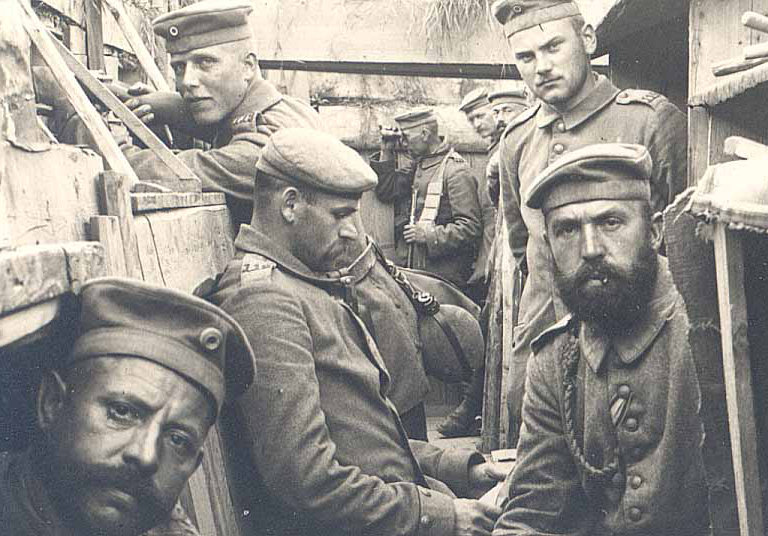
An original photo of men in the trenches with Besatzstreifen of the type shown above.